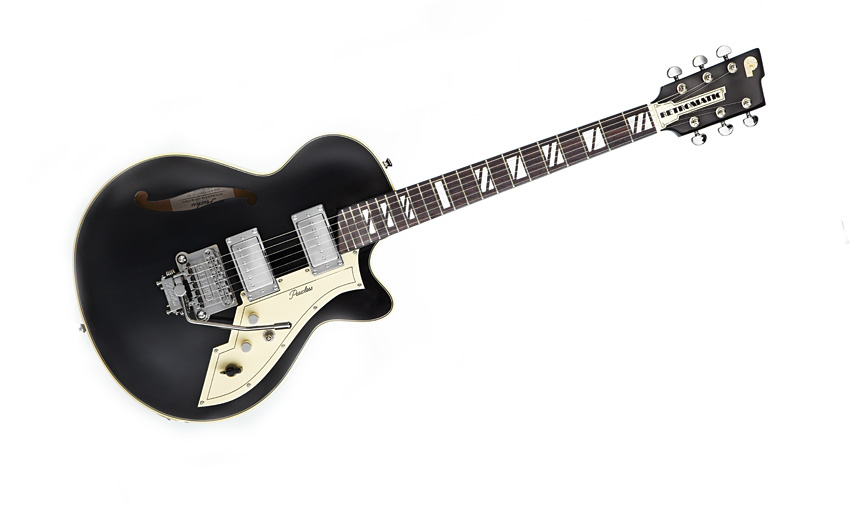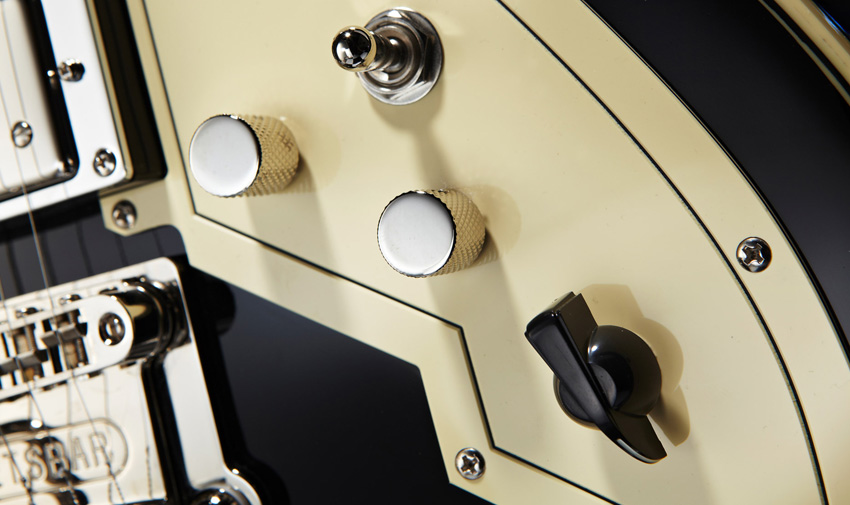MusicRadar Verdict
This Retromatic could easily sit with Gary Clark Jr's swampy blues, Mike Campbell's rootsier rock or Kenny Burrell's bluesier jazz - and it's a great guitar to help you find your own voice.
Pros
- +
Offers something unique. Plays well. Excellently spec'd.
Cons
- -
Spongy tuners. Quite heavy.
MusicRadar's got your back

Peerless Retromatic P3

Varitone

Bridge
With a market dominated by the same old brands and - for the most part - the same old guitars, it's getting increasingly rare for a non-heritage company to take too many risks. And that's why this Peerless' Korean-made single-cut P3 semi is such a welcome change.
Built like an ES-335 but slightly smaller, it's a bigger fish than a Les Paul but not so small that it puts off jazzers, especially when played seated. Still, while it does jazz very nicely, like the ES-335 (which was originally conceived as a 'jazz' guitar), it's far more versatile.
"The P3 is a rather nice player, with a chunky shouldered C-shaped neck, very tidy medium jumbo fretwire and mother-of-pearl inlays"
The P3 is also a rather nice player, with a chunky shouldered C-shaped neck, very tidy medium jumbo fretwire and mother-of-pearl inlays. Overall, it's a bit on the weighty side, but aside from that and some rather spongy feeling tuners and extra-large Retromatic logo'd truss rod cover, there's little to dislike.
The Stetsbar vibrato has been around for some years and is, seemingly, a rather over-engineered affair. This Stop-Tail version is designed to retrofit over the usual tune-o-matic and stud tailpiece arrangement of most Gibson solids and semis. If its Bigsby-like shimmer doesn't appeal, a vibrato-less P3 is £100 cheaper. In use, it has a light touch and super tuning stability.
Aside from the usual volume and tone controls, we have a Varitone, an old passive (no batteries) circuit that offers five filtered sounds via its six positions: fully anti-clockwise, it has no effect on the pickup's output. Again, if that's not your bag, go for the P2 (£699) or the P1 (£599), which both sport just a single humbucker at the bridge.
Speaking of the pickups, these are made by Peerless in Korea but designed by ace repairman and pickup specialist Matt Gleeson. It's little surprise, then, that plugged in, we're in for a bit of a treat. After your EMG-loaded shred machine, this P3 will sound positively weedy, but turn up your amp controls and a lovely clarity emerges, spikier on the bridge pickup, beautifully clean and mellow from that neck-placed single coil.
Clean, the Varitone options sound almost effected; fully clockwise, there's a usable electro-acoustic voice, while the other positions sound a little peaky and nasal - they're great with a phaser, though! Try the same experiments with a crunchy amp, however, especially with retro effects such as analogue delay, tremolo and fuzz, and these filter settings take on a new textural dimension.
The Stetsbar performs its smooth Bigsby-like shimmers effortlessly, and while the semi nature might lack the midrange clout of, say, a Les Paul, the width and openness of the sound is impressive.
Dave Burrluck is one of the world’s most experienced guitar journalists, who started writing back in the '80s for International Musician and Recording World, co-founded The Guitar Magazine and has been the Gear Reviews Editor of Guitarist magazine for the past two decades. Along the way, Dave has been the sole author of The PRS Guitar Book and The Player's Guide to Guitar Maintenance as well as contributing to numerous other books on the electric guitar. Dave is an active gigging and recording musician and still finds time to make, repair and mod guitars, not least for Guitarist’s The Mod Squad.
““We were arguing a lot and we were miserable”: How Green Day exceeded expectations with their most ambitious song
"There’s plenty for us guitarists to learn – and ‘less is more’ is the overriding lesson": how to play like George Harrison on The Beatles' Abbey Road
“They didn’t like Prince’s bikini underwear”: Prince’s support sets for the The Rolling Stones in 1981 are remembered as disastrous, but guitarist Dez Dickerson says that the the crowd reaction wasn’t as bad as people think










